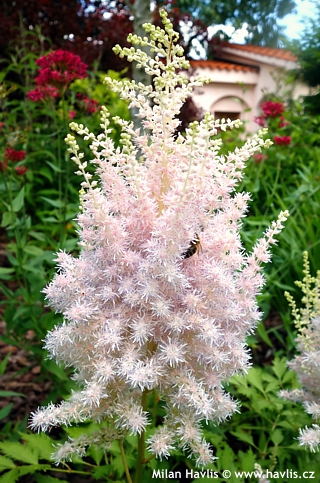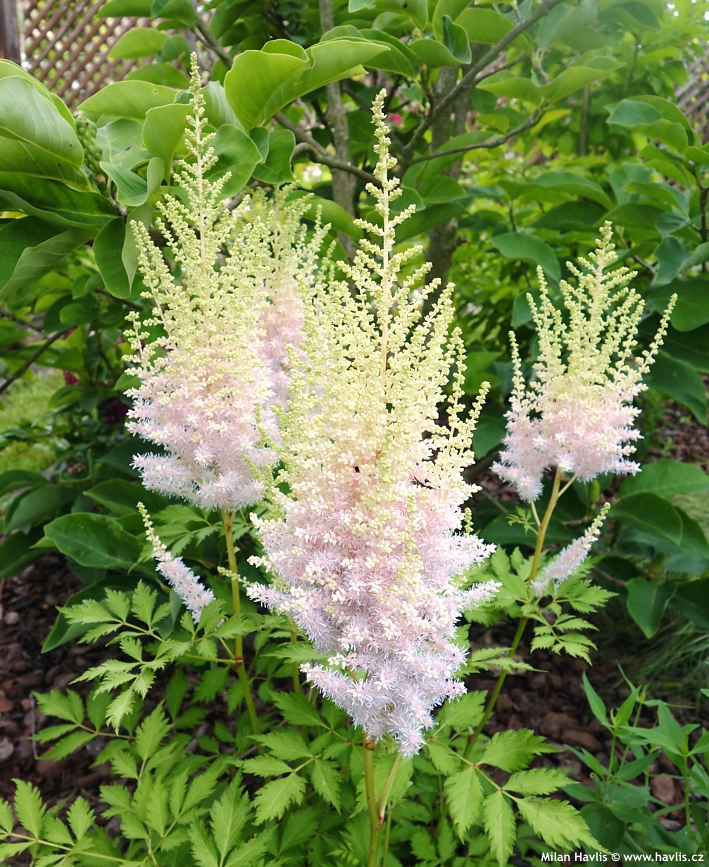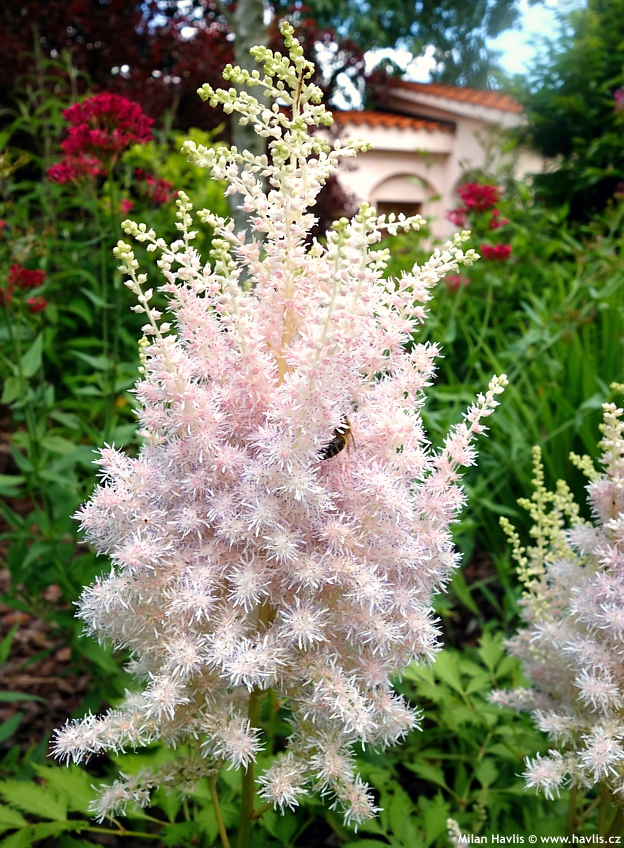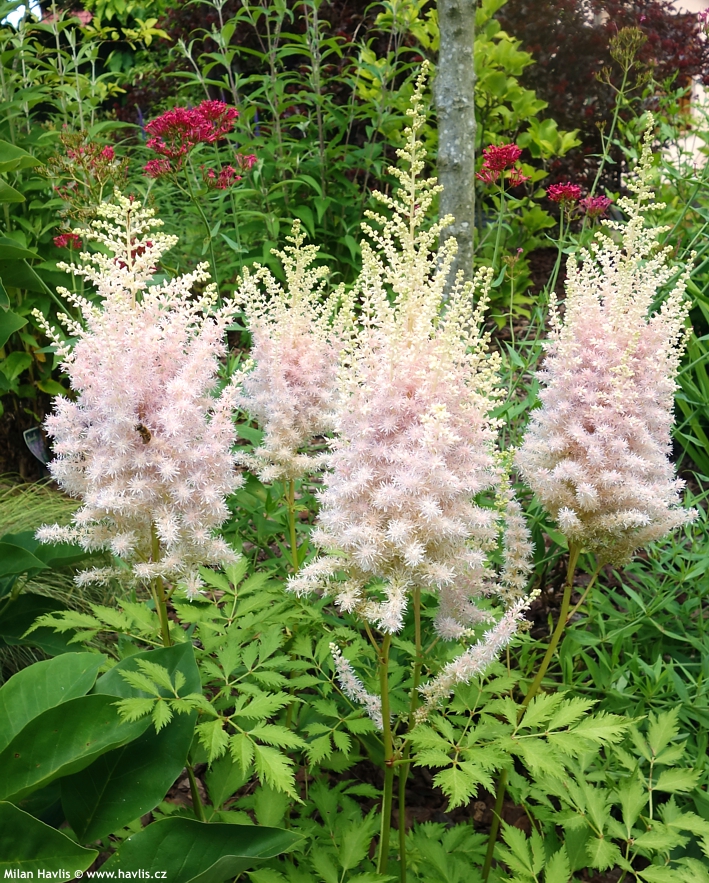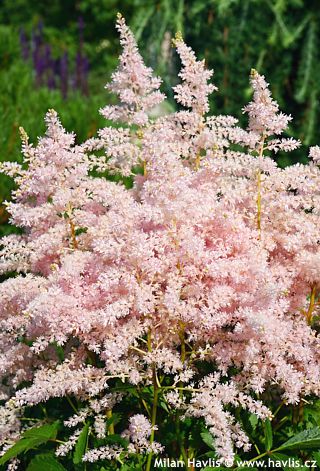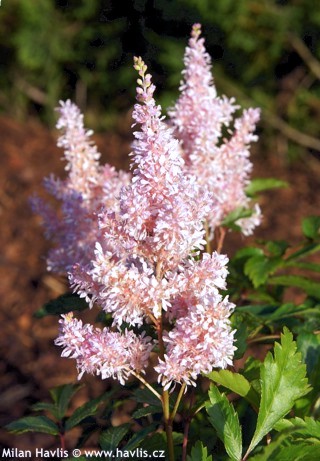Astilbe 'VISION INFERNO' astilbe
Astilbe
Astilbe series Vision is bred by Wilhelmus Franciscus van Veen from the Netherlands with the aim of achieving the richest colours, profuse flowering, and at the same time beautiful leaves that adorn the plant for the rest of the season when it is not in bloom. These are mostly hybrids of a. chinensis and a. arendsii. Vision Inferno is a cross between varieties Vision in Pink and Weisse Gloria. It was granted a patent No. PP26012 in 2015.
Who would have expected a strong name like Vision Inferno from an astilbe variety with pale pink, utterly gentle flowers? Only the breeder knows his intentions. This variety produces very dense plumes of a soft pink colour opening from light green buds which makes an interesting contrast before the inflorescence is completely open. Flowers are borne atop 40-50 cm tall, strong, and erect stems from late June until mid August. Deciduous leaves are medium to light green, divided, each leaflet heavily serrated at margins, healthy, and glossy.
Grow astilbe in humus-rich soil. If planted in boggy or regularly watered bed they can sit in full sun, too, otherwise choose a semi-shaded or shaded location. They are water loving plants and require a good dose of nutrients to look their best. They will not grow in chalky or clay soil that dries out in summer.
For best results divide the clumps every 3-4 years removing old and dead rhizomes in early spring. Also in the spring remove old leaves and last year’s flowers. If grown in poor soil you may need to cut back the entire plant after flowering to get rid of spent stems and tired foliage in order to encourage growth of new leaves. A dose of a liquid fertilizer is recommended. Fully hardy to min. -29 °C (USDA zone 5).
Last update 08-06-2022

































